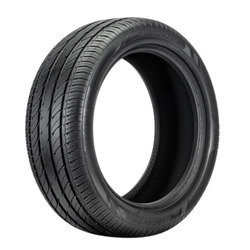

**Comparing Full Coverage and Liability Motorcycle Insurance: How to Select the Ideal Policy for Your Requirements**
Motorcycle insurance plays a crucial role in safeguarding both riders and their motorcycles from the financial repercussions of accidents, theft, and other unexpected incidents. When searching for motorcycle insurance, one of the key choices you will encounter is whether to opt for full coverage or liability insurance. Grasping the distinctions between these two policy types—and assessing your individual needs—can guide you in making a well-informed choice that balances coverage and expenses.
### What Is Liability Motorcycle Insurance?
Liability insurance represents the most fundamental type of motorcycle coverage and is generally the minimum mandated by law in many states. It addresses the damages and injuries you inflict on others or their property during an accident where you are responsible.
**Liability insurance usually encompasses:**
– **Bodily Injury Liability:** Covers medical costs, lost income, and legal expenses for injuries you cause to others.
– **Property Damage Liability:** Covers the expenses associated with repairing or replacing another individual’s vehicle or property that you damage in an accident.
**What it excludes:**
– Damage to your own motorcycle
– Your own medical costs (unless you include personal injury protection or medical payments coverage)
– Theft, vandalism, or natural disasters
### What Is Full Coverage Motorcycle Insurance?
Full coverage is a broader insurance alternative that comprises liability coverage along with extra protections for your own motorcycle and medical expenses. Although not a distinct policy type, “full coverage” usually signifies a blend of:
– **Liability Coverage** (as previously mentioned)
– **Collision Coverage:** Pays for repairs or replacement of your motorcycle following a collision, irrespective of who is at fault.
– **Comprehensive Coverage:** Addresses non-collision-related occurrences like theft, vandalism, fire, and weather-related damage.
– **Uninsured/Underinsured Motorist Coverage:** Safeguards you if you’re involved in an accident with a driver who lacks sufficient insurance to cover your losses.
– **Medical Payments or Personal Injury Protection (PIP):** Assists in covering your medical expenses post-accident.
### Key Differences Between Full Coverage and Liability Insurance
| Feature | Liability Insurance | Full Coverage Insurance |
|——–|———————|————————–|
| Covers damage to others | ✔️ | ✔️ |
| Covers damage to your motorcycle | ❌ | ✔️ |
| Covers theft or vandalism | ❌ | ✔️ |
| Covers weather-related damage | ❌ | ✔️ |
| Typically required by lenders | ❌ | ✔️ |
| Cost | Lower premiums | Higher premiums |
### Factors to Weigh When Selecting the Right Policy
Deciding between full coverage and liability insurance hinges on various personal and financial factors:
#### 1. **Value of Your Motorcycle**
If you own a new or high-end motorcycle, opting for full coverage is generally advisable. The expenses tied to repairs or replacement can be substantial, and full coverage can safeguard your investment. For older or lower-value bikes, liability coverage may be adequate.
#### 2. **Your Budget**
Liability insurance tends to be more economical, appealing to riders on a limited budget. However, its protection is restricted. Full coverage comes at a premium but can save you money if a significant accident or theft occurs.
#### 3. **Your Riding Habits**
Regular riders or those who use their motorcycle for daily commuting may find full coverage more beneficial due to higher exposure to risks. Infrequent or seasonal riders might choose liability coverage, particularly if the bike is stored for parts of the year.
#### 4. **Loan or Lease Obligations**
If your motorcycle is financed or leased, your lender will likely mandate full coverage to protect their investment until the loan is fully repaid.
#### 5. **Your Risk Appetite**
Evaluate how much financial risk you are comfortable accepting. If you can handle the costs of repairing or replacing your motorcycle out-of-pocket, liability coverage might be adequate. If not, full coverage can provide greater confidence.
### Tips for Securing the Ideal Policy
– **Compare Rates:** Explore and obtain quotes from various insurance providers to identify the best rate for the coverage you require.
– **Bundle Insurance Plans:** Some insurers provide discounts if you combine motorcycle insurance with other policies, such as auto or homeowners insurance.
– **Modify Your Deductibles:** Higher deductibles can reduce your premium, but ensure you can manage the out-of-pocket expense in case of a claim.
– **Annual Review:** Your insurance requirements may evolve over time. Assess your policy each year to confirm it continues to serve your needs.
### Conclusion
Deciding between full coverage and liability motorcycle insurance is a personal choice influenced by your motorcycle’s value, financial circumstances, and risk appetite. Liability insurance is a cost-effective solution for minimal legal compliance and limited protection, while full coverage delivers extensive protection for a higher cost. By thoughtfully analyzing your needs and comparing various options, you can choose the appropriate motorcycle insurance to ensure your safety on the road.






